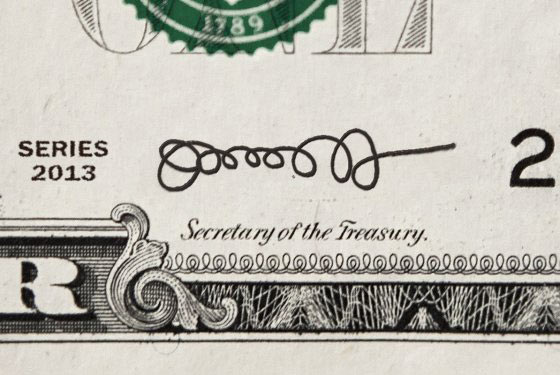within the world
And thou hast left me alone for ever in the dark ways of my bitterness

Evidence from a new study published in Science suggests that the One Child Policy in China is negatively affecting the personality of new generations. It claims that single children born under the policy are less trustworthy and trusting of others, more risk-aversive and pessimistic, less competitive and less conscientious.
photo { Mitch Epstein }
And what is death? she asked.

From the 1940s through the 1980s, recovery was accompanied by significant job growth—on the order of between 10 and 20 percent after four years. In our last three recessions, by contrast, we actually continued to lose jobs through the first months of “recovery,” and then added jobs at a glacial pace.
In 2003-4 and again over the last three years, this combination is often passed off as a curiosity: a “jobless recovery” in which the economy gets better but the labor market doesn’t. But that’s not really what’s happening. Job growth is slow because the recovery is slow. From the 1940s through the 1980, recoveries were relatively short and robust—usually adding about 10 percent to GDP in the first two years after the trough of the business cycle. In the 1991-3 recovery, GDP grew only 6 percent. In 2001-3, GDP grew only 5.9 percent. In the first two years of our current recovery (through July 2011), GDP grew only 4.4 percent. That’s not a jobless recovery. It’s no recovery at all.
photo { Allen Frame }
Hokypoky penny a lump
Infiniti Poker, like several other new online gambling sites, plans to accept Bitcoin when it launches later this month. […]
Developed in 2009 by a mysterious programmer known as Satoshi Nakamoto, Bitcoins behave much like any currency. Their value—currently about $13 per Bitcoin—is determined by demand. Transactions are handled through a decentralized peer-to-peer network similar to BitTorrent, the protocol for sharing films and music over the Internet. An assortment of merchants around the globe accept Bitcoin; it’s also the currency used on online black markets such as Silk Road, which processes an estimated $1.2 million a month in sales of illegal drugs, according to Nicolas Christin, the associate director of Carnegie Mellon’s Information Networking Institute.
Individuals can buy and sell Bitcoins using global currencies through such online exchanges as Mt. Gox. There’s even a service facilitated by BitInstant, a payment-processing company, that allows you to purchase the virtual currency for cash at 700,000 U.S. locations, including participating Wal-Mart, Duane Reade, and 7-Eleven stores. Once users have Bitcoins, they store them on their computers or mobile devices in files known as Bitcoin wallets or in cloud-based “e-wallets.”
Hajduk says Infiniti Poker will accept credit cards, wire transfers, and other payment options, but players in the U.S. will be able to play only using Bitcoins. He originally included the currency not to get around U.S. law but to reduce the time it takes to cash players out. Bank transactions can take up to 12 weeks; players who use Bitcoin can get a payout in a matter of hours, he says.
‘En tous lieux vains et fades où gît le goût de la grandeur.’ –Saint-John Perse

Age-otori (Japanese): To look worse after a haircut
Tingo (Pascuense language of Easter Island): To borrow objects one by one from a neighbor’s house until there is nothing left
Backpfeifengesicht (German): A face badly in need of a fist
{ via The Atlantic | Continue reading }
photo { Mary Ellen Mark }
Stick a fork in it

A thousand years ago, the Doge Pietro Orseolo II took his triumphant naval fleet to the sea entrance at the Lido and ceremoniously threw a diamond ring into the water, thus marrying his city to the Adriatic and securing Venice’s dominion over its waters and trade routes. […]
When Goethe visited Venice for just over two weeks in 1786, he climbed the campanile twice, at high tide and then at low tide. It was from this tower that, at the age of 37 and already famous, he saw the sea for the first time in his life. […]
Now we know for sure that the ocean is rising faster than Venice will subside.
photo { Roman Noven and Tania Shcheglova }
‘The press conference was briefly interrupted when bandito Paul Krugman stormed the stage.’ –ifyoucanreadthisyourelying.blogspot.com
It’s an exciting time to be in the energy industry in America. The impact of unconventional oil and gas development on the U.S. economy is considerable, with potentially hundreds of billions of dollars in investments, millions of new jobs, and a renaissance of American ingenuity and innovation.
In thinking about what is to come, looking back five years helps set the stage. January 2008: The energy sector was facing the great recession, high current and future expected natural gas prices, and job losses to China. There was a generally poor outlook for the energy industry and the economy.
Few could have predicted the changes that were to come. Unforeseen happenings include the North Dakota oil rush, liquefied natural gas facilities being used as export facilities (instead of as import facilities as originally planned), railroads hauling crude oil, and jobs coming back from China. And, this is just the beginning. The commencement of the crude oil and natural gas revolution can be boiled down to one simple equation:
Abundant resources + cost effective extraction = high production levels of unconventional oil and gas.
The net effect is a reshaping of the U.S. energy industry and our economy.
Boomed crashing chords. When love absorbs.
The US surveillance regime has more data on the average American than the Stasi ever did on East Germans.
The American government is collecting and storing virtually every phone call, purchases, email, text message, internet searches, social media communications, health information, employment history, travel and student records, and virtually all other information of every American.
Some also claim that the government is also using facial recognition software and surveillance cameras to track where everyone is going. Moreover, cell towers track where your phone is at any moment, and the major cell carriers, including Verizon and AT&T, responded to at least 1.3 million law enforcement requests for cell phone locations and other data in 2011. And – given that your smartphone routinely sends your location information back to Apple or Google – it would be child’s play for the government to track your location that way.
As the top spy chief at the U.S. National Security Agency explained this week, the American government is collecting some 100 billion 1,000-character emails per day, and 20 trillion communications of all types per year.
‘A golden rule: to leave an incomplete image of oneself.’ –Cioran

What if you could not access YouTube, Facebook, Twitter, and Wikipedia? How would you feel if Google informed you that your connection had been reset during a search? What if Gmail was only periodically available, and Google Docs was completely unreachable?
These things happen almost every day in China. […] Most of these problems are caused by GFW (Great Firewall of China, also known as GFC), one of the most important building blocks in China’s comprehensive censorship system, and perhaps the most sophisticated Internet censorship system in the world. […] Using special techniques, it successfully blocks the majority of Chinese Internet users from accessing most of the Web sites or information that the government doesn’t like. […]
Over a decade of development, GFW has been deployed near the gateways of all Chinese domestic ISPs. With DPI (deep packet inspection) technology, GFW wiretaps all international links and inspects the traffic to detect any sensitive keywords going through the gateway. GFW depends mainly on three technologies to block “harmful” information: IP blocking, DNS (Domain Name System) injection, and TCP RST (Reset).
photo { Florian Ruiz }
O farmers, pray that your summers be wet and your winters clear
China is the world’s top producer of honey: it turns out about a quarter of the world’s supply.
Chinese honey is cheap and the US had been a major importer. But in 2001, in the wake of a US government investigation that found domestic honey producers being harmed by significant price disparities between Chinese and American honey, the US levied an anti-dumping duty of roughly $1.20 per pound (454 gm) on Chinese honey. This tariff, its imposition implying that this honey was being sold below its real cost of production, was intended to level the playing field for American beekeepers who could not compete with imported honey selling in America at half their cost.
For companies like ALW that were importing tonnes of Chinese honey into the US every year, this was a big business setback. To evade the duty, some of them started getting shipments via third countries, with the honey’s point-of-origin relabelled accordingly. After all, no tariff was due on honey from India, Malaysia, Mongolia or Russia.
The operation soon came to be called ‘honey laundering’. ALW was one among several firms doing it, but it has been in the spotlight ever since the arrests. According to a 44-count indictment of the firm, over 2004-06, it laundered over 2 million pounds—900 tonnes—of Chinese honey through India, evading nearly $80 million in duties.
She made me cry, she done me wrong, she hurt my eyes open

From an office on Sunset Boulevard, a dapper 69-year-old has emerged as a go-to guy for musicians and songwriters looking for quick cash.
His name is Parviz Omidvar, and over the past two decades, he has been lending to artists and securing those debts with royalty payments his clients earn from their work. Michael Jackson was a customer, as is the son of late Motown legend Marvin Gaye. Omidvar’s website carries an old testimonial from Rock and Roll Hall of Fame member Bobby Womack: “Thank you so much for always being there for me.”
Today, Womack is suing Omidvar for fraud. He alleges the financier tricked him into selling for $40,000 full control of a royalty stream that annually pays many times that amount on Womack-penned hits, including blaxploitation classic “Across 110th Street” and “It’s All Over Now,” the first U.S. No. 1 record for the Rolling Stones. Womack’s lawyer says the 68-year-old musician was misled into signing the deal in April last year, when he was incapacitated by painkillers following prostate cancer surgery.
Omidvar calls Womack’s claim “a simple case of buyer’s remorse.” Womack understood he was selling his royalties, and his allegations are “a complete lie,” Omidvar says.
Omidvar’s quick cash can come at a steep price. Reuters found scores of loans with interest rates ranging from 1.5 to 2.5 percent every 10 to 15 days - annualized rates potentially ranging from 43 percent to 81 percent.
I’ll make death love me

Verizon is arguing before the Court of Appeals for the D.C. Circuit that broadband providers have a right to decide what they transmit online. […] According to Verizon’s argument:
In performing these functions [providing the transmission of speech from Point A to Point B], broadband providers possess ‘editorial discretion.’
Just as a newspaper is entitled to decide which content to publish and where, broadband providers may feature some content over others.
In effect, Verizon claims that by transmitting bits – providing Internet access – it gains the rights of a newspaper like the Washington Post or the New York Times. This assertion has no basis in constitutional law, and in fact repudiates many positions taken by Verizon before Congress, courts and the FCC over the years.[…]
“Verizon and its predecessors have argued exactly to the contrary time after time — including when they were fighting for open access to cable companies’ wires a decade ago and when they have claimed immunity from liability based on their status as a transmissions provider for the content they carry,” said Tyrone Brown, who served as an FCC Commissioner from 1977-1981.
Hades
With a homicide rate historically more than three times greater than the rest of the United States, Newark, N.J., isn’t a great vacation spot. But it’s a great place for a murder study.
Led by April Zeoli, an assistant professor of criminal justice, a group of researchers at Michigan State University tracked homicides around Newark from 1982 to 2008, using analytic software typically used by medical researchers to track the spread of diseases. They found that “homicide clusters” in Newark, as researchers called them, spread and move throughout a city much the same way diseases do. Murders, in other words, did not surface randomly—they began in the city center and moved in “diffusion-like processes” across the city.
The study also found that the there were areas of Newark that, despite being beset by violence on all sides, remained almost completely immune to the surrounding trends over the entire course of the 26 years studied.
Prepare to receive cavalry. Prepare to receive soup.

These days, the TSA’s major role appears to be to make plane trips more unpleasant. And by doing so, it’s encouraging people to take the considerably more dangerous option of traveling by road. […]
A longer list of TSA’s confiscations would include a G.I. Joe action doll’s 4-inch plastic rifle (“it’s a replica”) and a light saber. […]
Researchers at Cornell University suggest that people switching from air to road transportation in the aftermath of the 9/11 attacks led to an increase of 242 driving fatalities per month—which means that a lot more people died on the roads as an indirect result of 9/11 than died from being on the planes that terrible day. They also suggest that enhanced domestic baggage screening alone reduced passenger volume by about 5 percent in the five years after 9/11, and the substitution of driving for flying by those seeking to avoid security hassles over that period resulted in more than 100 road fatalities.
‘There are more things to alarm us than to harm us, and we suffer more often in apprehension than reality.’ –Seneca

The OECD has a new report out projecting what countries’ economic output, both total and per capita, will be in 2060. Unsurprisingly, the Chinese and Indian economies will have eclipsed the U.S. one, which will remain in third place.
But the per capita numbers are more striking, and encouraging. The report projects that between 2011 and 2060, real GDP per capita will increase sevenfold in India and China. In China, that means a jump from $8,387 in 2011 to almost $60,000 in 2060, in constant 2011 dollars. By contrast, U.S. GDP per capita in 2011 was $48,328.
OECD also projects declining inequality between countries over the next fifty years. The United States will still have a much bigger GDP per capita than China in 2060 — about $136,611, if the OECD is right. But that’s a little more than double China’s level, whereas today, U.S. GDP per capita is almost six times that of China’s.













